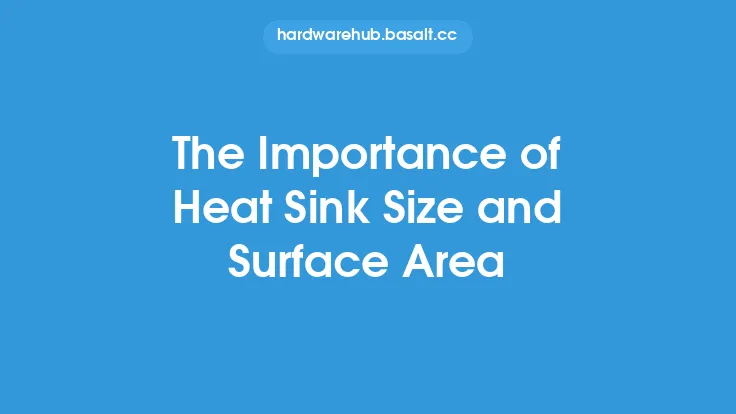When it comes to cooling systems, one of the most critical components is the radiator. The radiator plays a crucial role in dissipating heat from the system, and its size and configuration can significantly impact the overall performance of the cooling system. In this article, we will delve into the importance of radiator size and configuration in cooling systems, exploring the key factors that influence their design and operation.
Introduction to Radiator Size and Configuration
The size and configuration of a radiator are determined by several factors, including the type of cooling system, the amount of heat to be dissipated, and the available space. A radiator that is too small may not be able to dissipate heat efficiently, leading to increased temperatures and reduced system performance. On the other hand, a radiator that is too large may be unnecessary and wasteful, adding extra cost and complexity to the system. The configuration of the radiator, including the number and arrangement of tubes, fins, and fans, also plays a critical role in its performance. A well-designed radiator configuration can maximize heat transfer and minimize pressure drop, while a poorly designed configuration can lead to reduced performance and increased energy consumption.
Heat Transfer and Pressure Drop
The primary function of a radiator is to transfer heat from the coolant to the surrounding air. This process occurs through convection, where the coolant flows through the radiator tubes and transfers its heat to the tube walls. The tube walls then transfer the heat to the surrounding fins, which increase the surface area and enhance heat transfer. The fans blow air through the radiator, carrying the heat away from the system. The heat transfer rate is influenced by several factors, including the temperature difference between the coolant and the air, the flow rate of the coolant, and the surface area of the radiator. Pressure drop, on the other hand, refers to the loss of pressure that occurs as the coolant flows through the radiator. A high pressure drop can lead to increased energy consumption and reduced system performance.
Radiator Size and Configuration Considerations
When selecting a radiator, several factors must be considered, including the heat load, flow rate, and pressure drop. The heat load is the amount of heat that must be dissipated by the radiator, and it is typically measured in watts. The flow rate is the rate at which the coolant flows through the radiator, and it is typically measured in liters per minute. The pressure drop is the loss of pressure that occurs as the coolant flows through the radiator, and it is typically measured in pascals. Other factors that must be considered include the type of coolant, the operating temperature range, and the available space. The radiator size and configuration must be carefully selected to ensure that the heat load is dissipated efficiently, while minimizing pressure drop and energy consumption.
Types of Radiator Configurations
There are several types of radiator configurations, each with its own advantages and disadvantages. The most common types of radiator configurations include the tube-and-fin design, the plate-and-frame design, and the brazed plate design. The tube-and-fin design is the most common type of radiator configuration, and it consists of a series of tubes that are connected to a set of fins. The plate-and-frame design consists of a series of plates that are connected to a frame, and it is often used in high-performance applications. The brazed plate design consists of a series of plates that are brazed together, and it is often used in compact systems.
Radiator Size and Configuration Optimization
Optimizing the radiator size and configuration is critical to ensuring that the cooling system operates efficiently. This can be achieved through the use of computational fluid dynamics (CFD) and other simulation tools. CFD allows engineers to model the flow of coolant and air through the radiator, and to optimize the design for maximum heat transfer and minimum pressure drop. Other optimization techniques include the use of genetic algorithms and other optimization methods. By optimizing the radiator size and configuration, engineers can ensure that the cooling system operates efficiently, while minimizing energy consumption and reducing costs.
Conclusion
In conclusion, the size and configuration of a radiator are critical factors in the design and operation of a cooling system. A well-designed radiator can efficiently dissipate heat, while minimizing pressure drop and energy consumption. The selection of a radiator must be carefully considered, taking into account factors such as the heat load, flow rate, and pressure drop. By optimizing the radiator size and configuration, engineers can ensure that the cooling system operates efficiently, while minimizing costs and reducing environmental impact. Whether you are designing a new cooling system or optimizing an existing one, understanding the importance of radiator size and configuration is essential to achieving optimal performance and efficiency.





